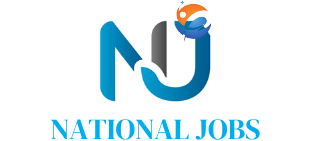A resume is more than a list of jobs—it’s your personal marketing document. In Canada’s competitive job market, employers expect a resume that is concise, tailored, and focused on measurable results. If you’re wondering how to write a good resume in 2025, the key lies in understanding best practices, Canadian standards, and the details that make your application stand out. Below, we’ll answer the most common questions job seekers in Canada have about resumes today.
How to Write a Resume (Best Practices)
When writing a resume for Canadian employers, the number one rule is customization. You should tailor every resume to the specific job posting by aligning your skills and accomplishments with the employer’s needs. A strong Canadian resume in 2025 follows this structure:
Contact Information – Your name, phone number, email, city/province, and LinkedIn profile. Avoid adding personal details like age, marital status, or a photo, as they are not standard in Canada.
Professional Summary – A short, two- to three-sentence overview highlighting your career achievements, top skills, and what you bring to the role. Replace outdated “career objectives” with this modern approach.
Work Experience – Use reverse chronological order. Focus on achievements using action verbs (“led,” “achieved,” “developed”) and quantify results whenever possible (“boosted client retention by 25%”).
Education & Certifications – List your highest level of education first, followed by relevant training or certifications. For example, NASM fitness certification for trainers or CPA for accountants.
Skills Section – Include both hard and soft skills, making sure to match keywords from the job description.
Optional Sections – Languages, volunteer work, or professional memberships.
Keep the format clean, professional, and ATS-friendly (Applicant Tracking Systems are widely used in Canada). Avoid overly creative designs unless you’re in a creative industry.
How Long Should a Resume Be?
Canadian resumes are expected to be 1–2 pages long. Length depends on your level of experience:
Entry-level job seekers or recent graduates: Aim for 1 page. Keep it focused on education, internships, and relevant skills.
Mid-level professionals: 1–2 pages, highlighting the last 10–12 years of work experience.
Senior managers or executives: 2 pages are standard, but content should remain concise.
Employers in Canada value brevity because recruiters often spend less than 10 seconds scanning a resume. Going beyond 2 pages is rarely recommended unless you’re in academia, medicine, or research, where a CV (Curriculum Vitae) is more appropriate.
What Skills to Put on a Resume
Your skills section should demonstrate a balance of technical (hard) skills and transferable (soft) skills relevant to the Canadian job market in 2025. Employers expect this section to be tailored to the position:
Hard Skills (examples):
Microsoft Office and Google Workspace proficiency
Data analysis and project management tools (e.g., Asana, Trello, Power BI)
Digital marketing and SEO for business roles
Industry-specific software like AutoCAD, QuickBooks, Salesforce, or SAP
Bilingualism (English/French), which is a major asset in many Canadian roles
Soft Skills (examples):
Communication and interpersonal skills
Problem-solving and critical thinking
Leadership and teamwork
Time management and adaptability
Customer service orientation
To improve your chances of passing ATS screening, mirror the exact wording of skills listed in the job description where possible.
How to List References in a Resume
In Canada, references are not typically included on the resume itself. Instead, they are provided later in the hiring process when requested by the employer. Here’s the best approach in 2025:
Do not list references directly on your resume.
Avoid writing “References available upon request” — it’s considered outdated and unnecessary.
Prepare a separate document called a Reference List, which includes each referee’s name, title, organization, phone number, and email.
Select professional references, such as former supervisors, managers, or professors. Avoid personal references like friends or family.
Keeping references off your resume saves space and ensures you only share contact information when it’s truly needed.
Font Size for Resume
The right font size ensures your resume is readable on both screens and printouts:
10–12 pt for body text is the Canadian standard in 2025.
14–16 pt for section headings to create clear divisions.
Use professional, easy-to-read fonts such as Calibri, Arial, Helvetica, or Times New Roman.
Avoid decorative fonts or anything difficult to scan—ATS systems may reject resumes with unusual formatting.
Consistency is key: use the same font style throughout the document for a polished, professional look.
Is a CV the Same as a Resume?
In Canada, a CV (Curriculum Vitae) is not the same as a resume. The difference matters, especially when applying in 2025:
Resume: A concise, 1–2 page document tailored to a specific job, highlighting relevant work experience, skills, and education. This is what 99% of Canadian employers expect.
CV: A comprehensive document that can run several pages, used mainly in academia, medicine, research, and scientific roles. A CV includes publications, research, teaching experience, and professional affiliations.
For most Canadian job applications, you’ll need a resume, not a CV. Make sure you know which is required before submitting.
Final Thoughts
Learning how to write a good resume in Canada in 2025 means following clear formatting rules, keeping content focused and relevant, and aligning your achievements with employer expectations. Keep it 1–2 pages, highlight the most important experience, prepare references separately, and use a clean font size and layout. By applying these best practices, you’ll be well-prepared to impress Canadian recruiters and increase your chances of landing interviews.
To make the process even simpler, our free, easy-to-use resume builder walks you through each step in creating a polished and professional document. The tool is available directly on our website, where you can follow a series of guided steps designed to save time and help you avoid common mistakes. Since the platform uses cookies to improve your browsing experience, you can continue working on your draft without losing progress. Whether you’re updating your resume for the first time or tailoring it for a new opportunity, this step-by-step approach makes learning how to write a good resume faster and more effective.
.

